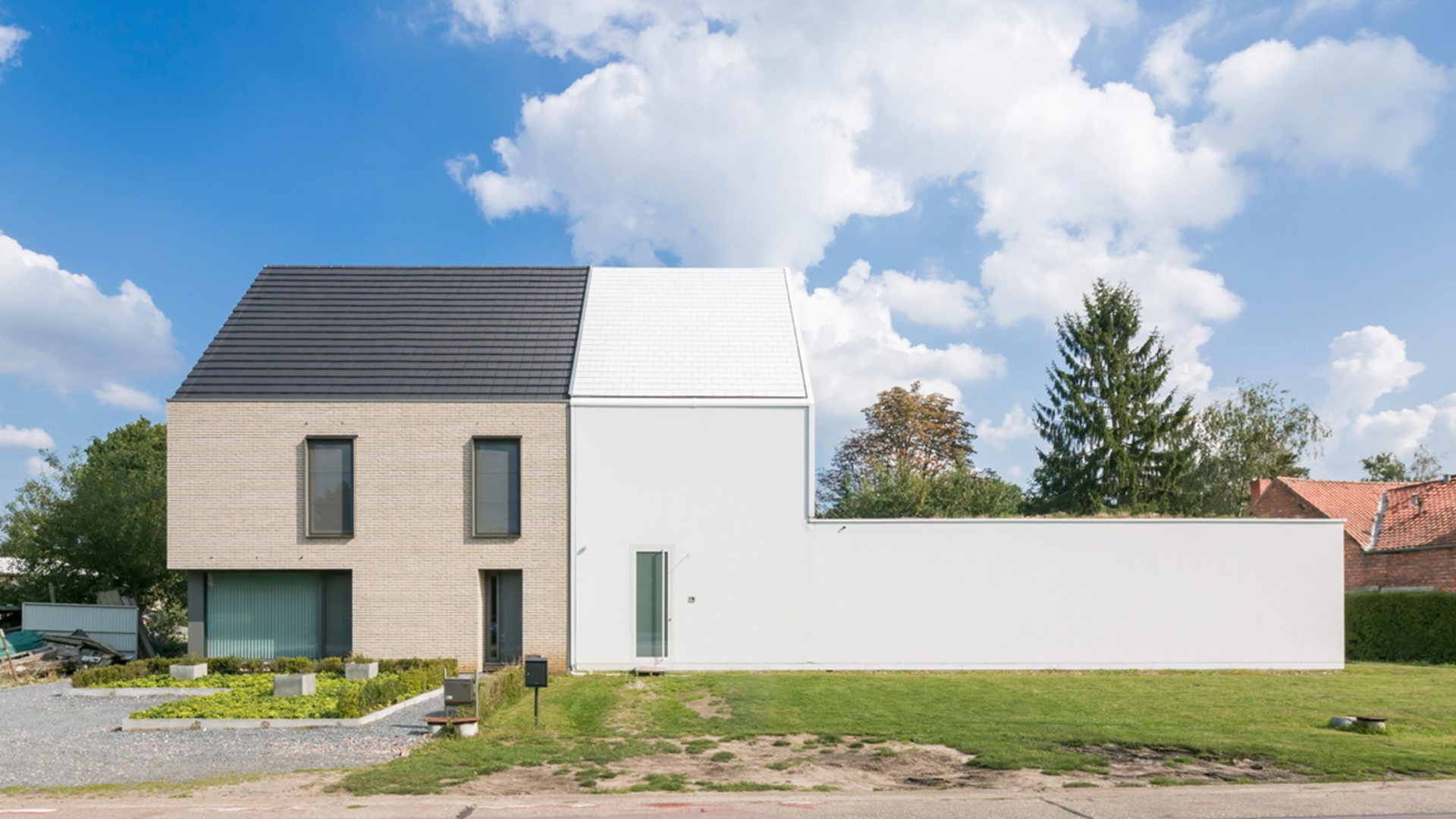
The Commonwealth War Graves Commission (CWGC) maintains war cemeteries and memorials in more than 150 countries, commemorating the fallen of the Commonwealth forces in both world wars.
Jon Gedling MRICS is estates director at the CWGC and was directly involved in the recent renovation of Belgium’s Menin Gate Memorial that took two years to complete. It involved stone restoration, structural conservation and the addition of a biodiverse green roof.
To coincide with Remembrance Day, Modus had the chance to ask Jon a few questions about the project.
Modus: What is the Menin Gate and why was it built in Ypres?
Jon Gedling MRICS: The Menin Gate in Belgium is a Commonwealth War Graves memorial dedicated to the missing servicemen of the First World War. It spans the Menin Road at Ypres, the route taken by hundreds of thousands of Commonwealth troops marching into the notorious Ypres Salient. This area saw five major battles, including the devastating Third Battle of Ypres (Passchendaele), making the city synonymous with the trench warfare and huge losses of the Great War.
Designed by Sir Reginald Blomfield, the Menin Gate commemorates more than 54,000 men on Portland stone panels. Buglers have sounded the Last Post under the arches of the Menin Gate at 8pm every evening since 2 July 1928 (with the exception of the period of German occupation in World War Two). Traffic is halted and visitors gather for the remembrance ceremony.

The Last Post ceremony taking place in front of a scaffold wrap, featuring Sir Reginald Blomfield’s 1921 sketch of the Menin Gate
What was the extent of the restoration work?
The Menin Gate restoration was one of the most ambitious conservation projects ever undertaken by the CWGC. The roof had leaked for much of the memorial’s life. Originally, it was just a thin layer of asphalt, later covered with various materials in attempts to waterproof it. As part of the project, we installed a green ‘living’ roof and created new safe access across the roof.
Like many of our memorials, the structure is concrete with brick and stone facing. After a century exposed to the elements there were multiple issues to address, including water movement through the stone and deterioration of the name panels, which we have a duty to keep legible in perpetuity.
We tackled water ingress through the masonry, carried out stone and brick repairs (replacing only where repairs couldn’t be made). We used traditional conservation techniques with lime repointing and gentle steam cleaning to preserve the patina of age.
The architectural lighting for the nightly ceremony was completely redesigned and upgraded to LEDs, improving sustainability and visual impact. We aimed to carefully conserve the memorial to ensure it remains a place of remembrance for generations to come.
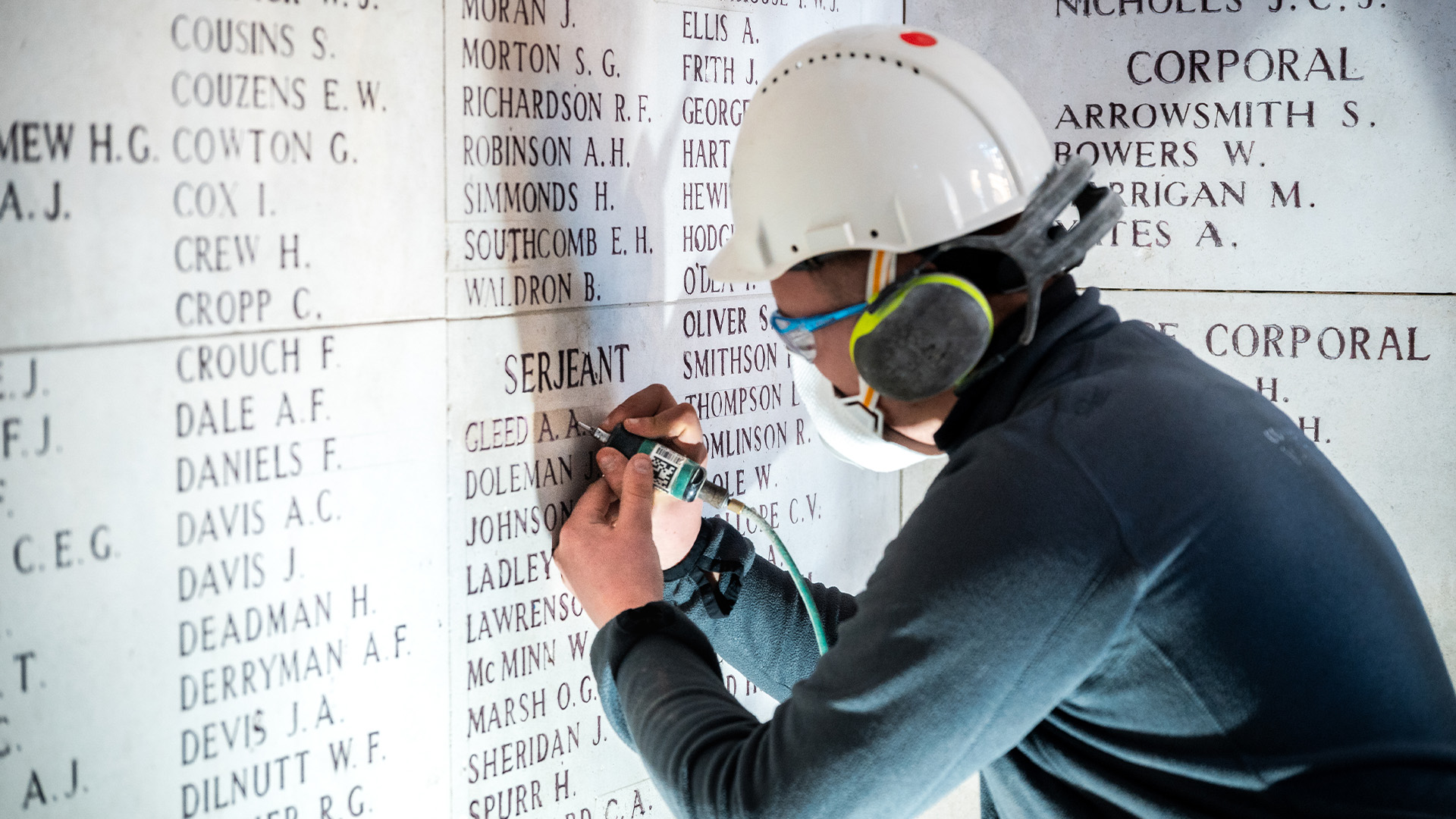
The CWGC has a duty to keep the names of the fallen legible in perpetuity
Did the project present any unusual or unique challenges?
Yes, several. The Menin Gate’s UNESCO World Heritage status and designation as a protected monument meant we had to meet strict conservation standards. And we received major grants from the Flemish Government and City of Ypres, whose support came with clear criteria.
Working on the roof – a barrel-vaulted concrete structure behind tall parapets – was a key challenge. It’s accessed annually for a commemorative service where thousands of poppies are released through the giant bronze oculi, so it had to be watertight and safely accessible. The living roof achieved this and also helped enhance biodiversity across the city ramparts.
We also replaced a few deteriorated Portland stone panels listing names of missing soldiers. When remains are recovered on the former battlefield and identified, which still happens, a headstone is installed and the name removed.
The memorial’s location added complexity. It sits on a key road and hosts the nightly Last Post ceremony, which continued throughout the works. We had to maintain traffic and pedestrian access below the arch while working above.
While the project stayed broadly within budget a few elements were unexpected. One roof layer contained asbestos, despite prior testing. We also found the original concrete surface was in worse condition than anticipated – accessing and repairing a steep barrel-vaulted roof safely proved challenging!
“This was one of the most fascinating and complex projects I’ve worked on” Jon Gedling MRICS, Commonwealth War Graves Commission
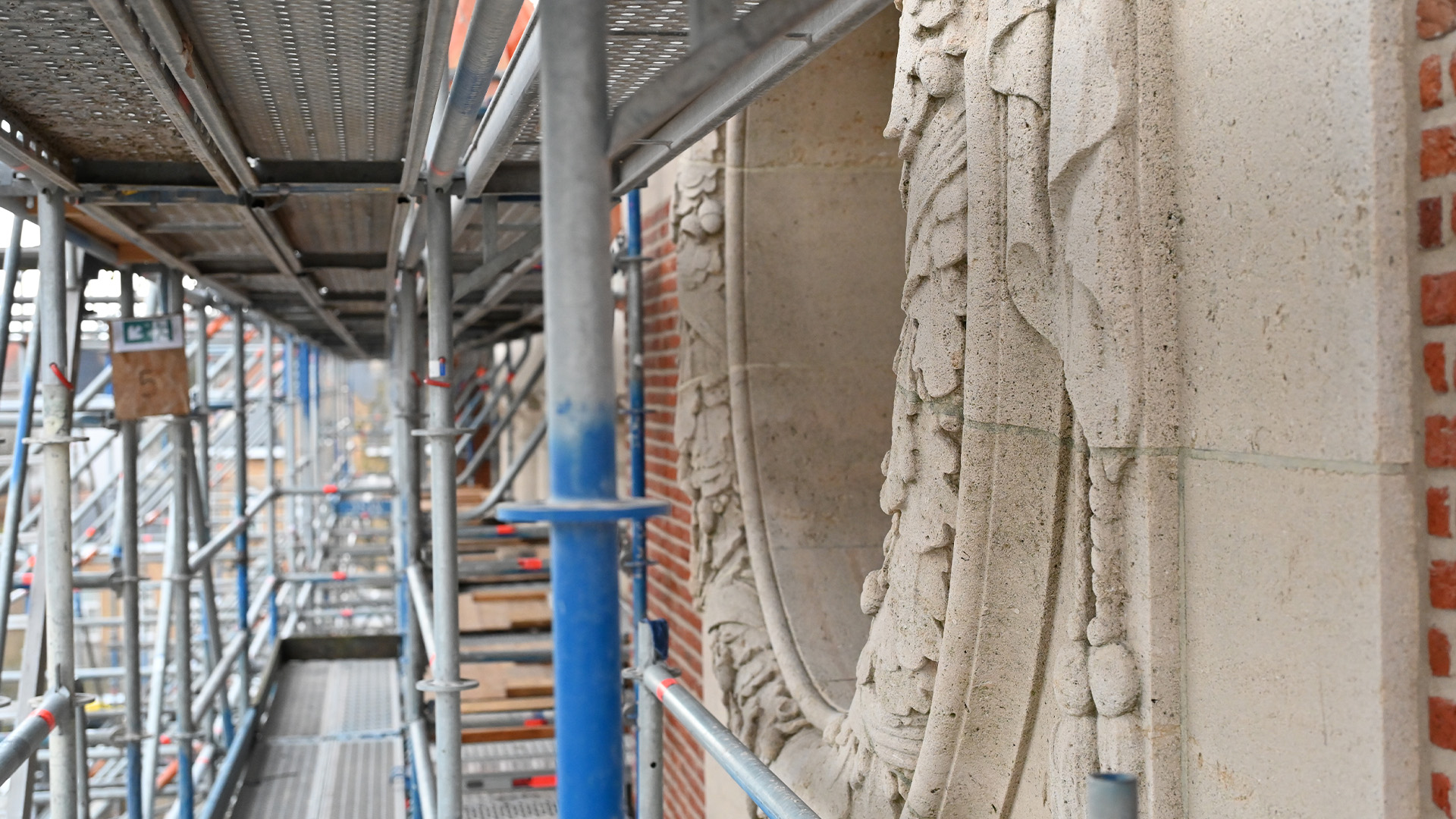
Scaffolding was installed without blocking public access
How did you work around the daily Last Post ceremony at 8pm?
From the outset, we committed to preserving this tradition without interruption. Asbestos removal from the roof was carried out while the site remained in daily use, and each evening the area had to be made safe and presentable for hundreds of visitors.
The scaffolding was designed to be visually unobtrusive and safe for public access, and a road tunnel and two temporary pedestrian tunnels were installed to maintain movement through the central arch.
We worked closely with the Last Post Association to ensure the ceremony could continue safely and with dignity. Temporary lighting was installed, and a scaffold wrap featuring Sir Reginald Blomfield’s original 1921 sketch was designed to protect the stonework and maintain the memorial’s appearance during the works. Alongside this, a major exhibition at the adjacent Visitor Centre helped interpret the restoration for the public.
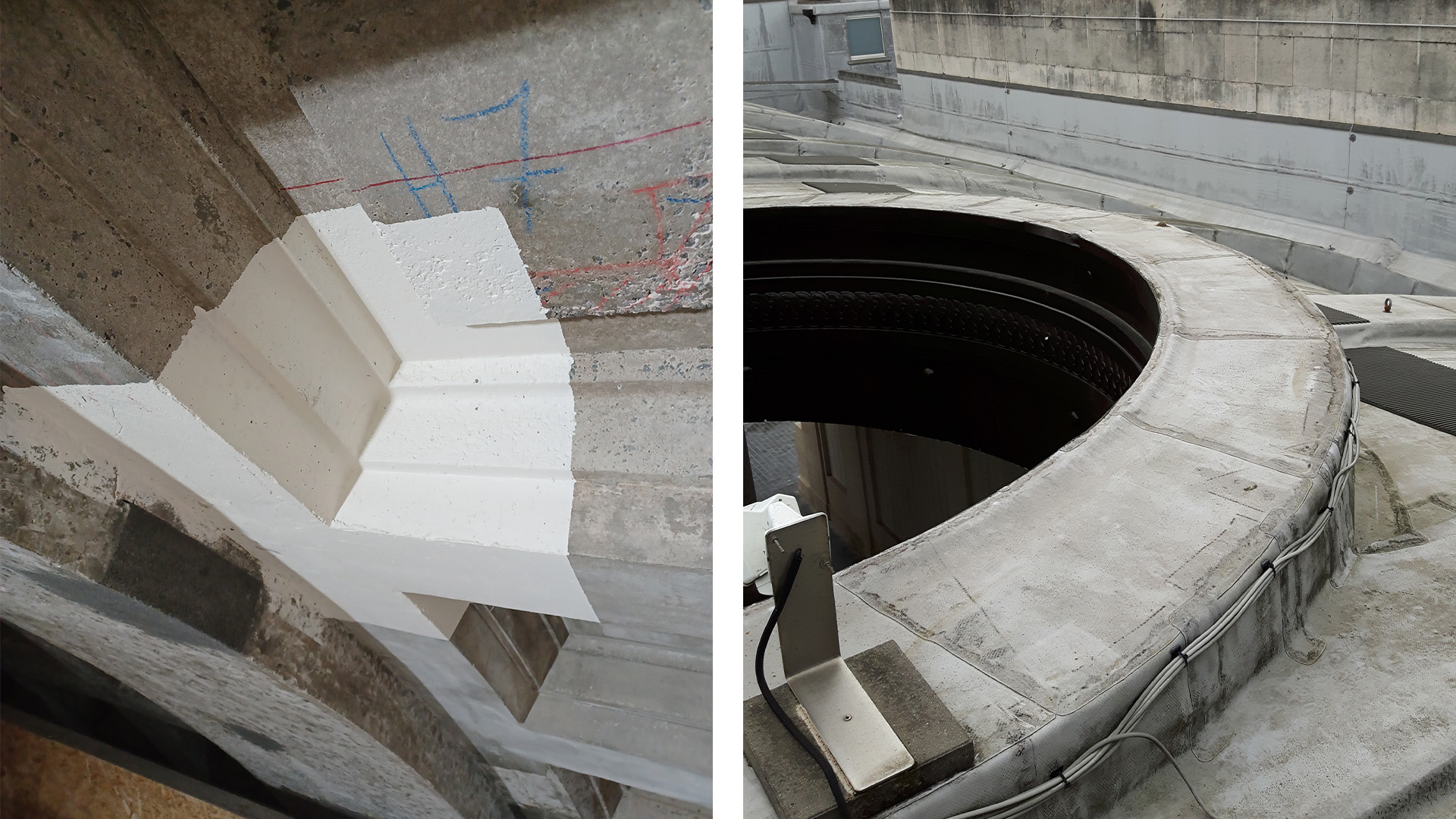
Why was a living roof chosen for the Menin Gate and how was it designed?
The motivation was both practical and symbolic. It helps with managing water attenuation, while also adding a layer of life to a place of remembrance – a subtle enhancement reflecting CWGC’s commitment to sustainability. The design was developed with heritage authorities to meet conservation standards and support local biodiversity as part of the wider city ramparts.
The Menin Gate is a deeply symbolic structure, and any change, however discreet, invited scrutiny. Some stakeholders felt the roof should remain untouched. We held detailed discussions with heritage bodies, local authorities and CWGC member nations to ensure the proposal was fully understood and the Flemish Government were willing to support this part of the scheme financially.
“Projects like this show the breadth of work that chartered building surveyors undertake globally” Jon Gedling MRICS, Commonwealth War Graves Commission
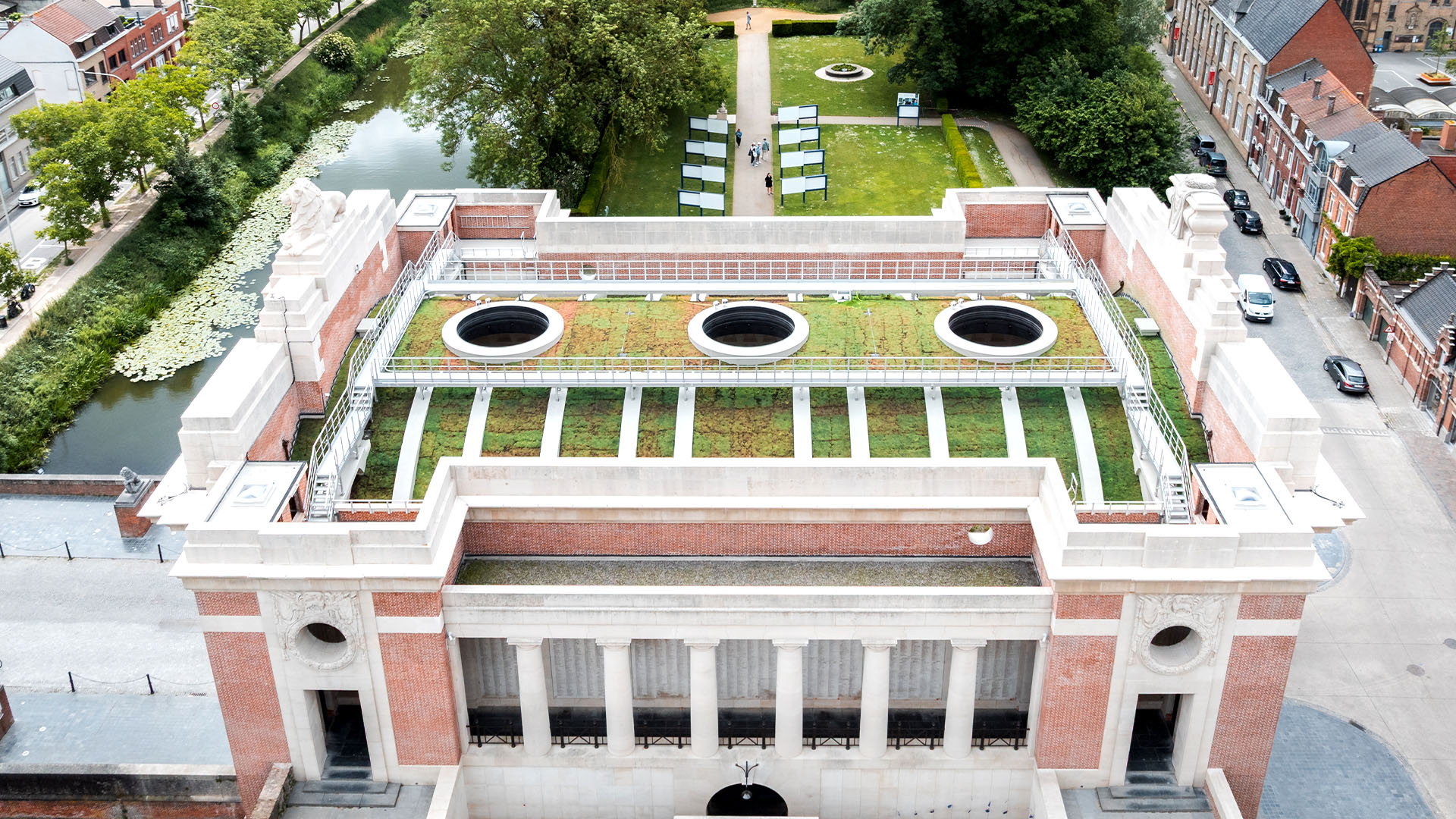
The new 'living' green roof of the Menin Gate
How does your experience as a chartered surveyor affect the way you approach a project like this?
This was one of the most fascinating and complex projects I’ve worked on, alongside our team in Belgium. The international context added complexity – from differing legislation and conservation standards to language and cultural nuances – all requiring a tailored approach.
The core principles from my work on other projects are still the same: understanding buildings, managing risk, and ensuring long-term care. My role was to align our approach with CWGC’s wider estate and conservation policies and ensure we achieved value for money for our six member governments and grant providers.
Projects like this show the breadth of work that chartered building surveyors undertake globally. Surveying equips you with a way of thinking, from diagnosing defects to planning projects. My professional background helped ensure our decisions were robust, proportionate, and respectful of the memorial’s enduring importance.
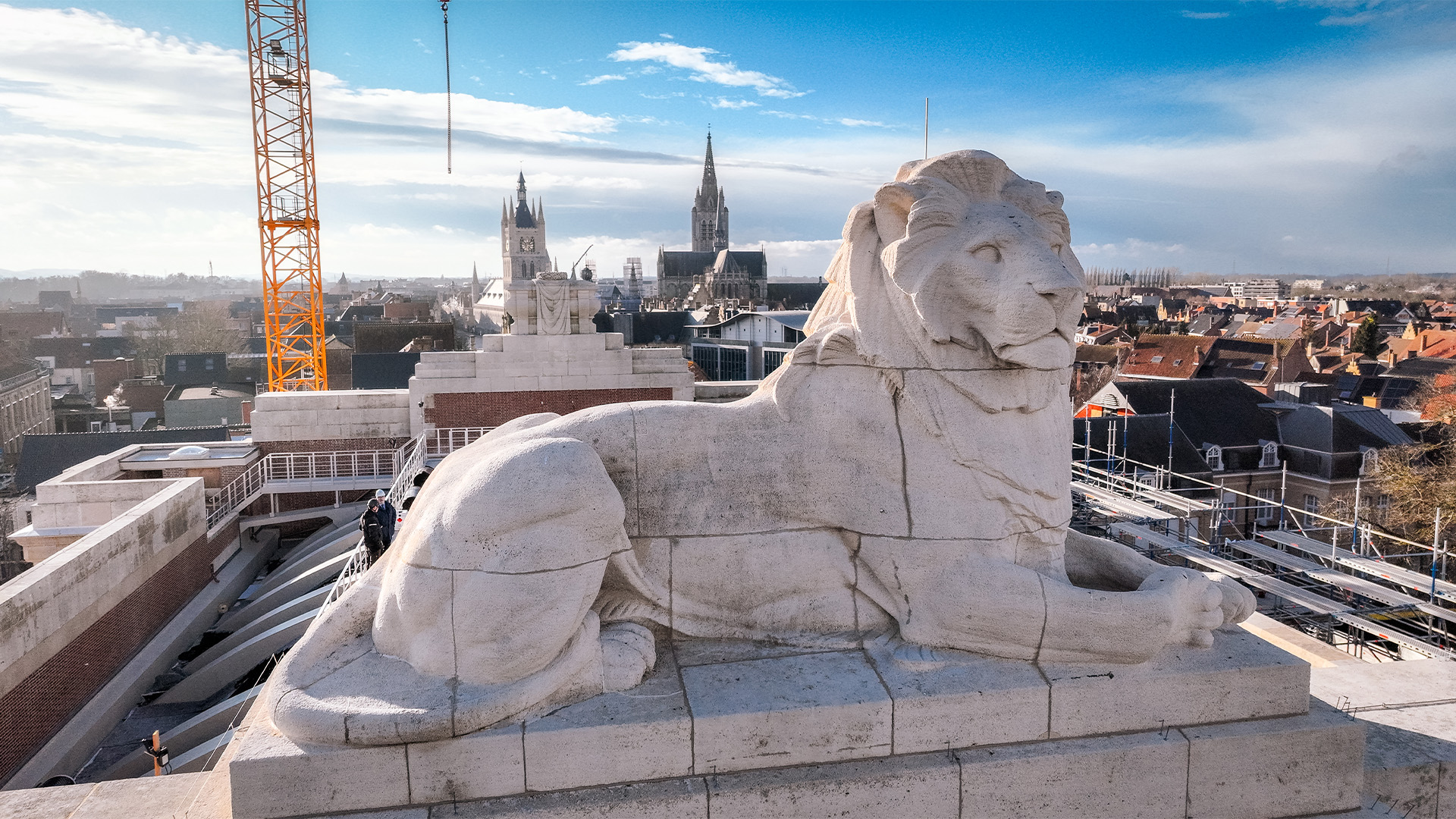
How did it feel when it was formally re-opened by HRH The Princess Royal, and what was her impression of the restoration work?
It was a moment of great pride for me and the whole team. The Princess Royal, as CWGC president, has a deep understanding of our mission and the significance of the Menin Gate. During the ceremony, she unveiled a UNESCO plaque and viewed the living roof.
The Princess was especially interested in how the roof had been adapted for a changing climate and the wider impacts of how droughts in Belgium last summer had affected our cemeteries. She had a number of questions for the gardening team and was very well-informed.
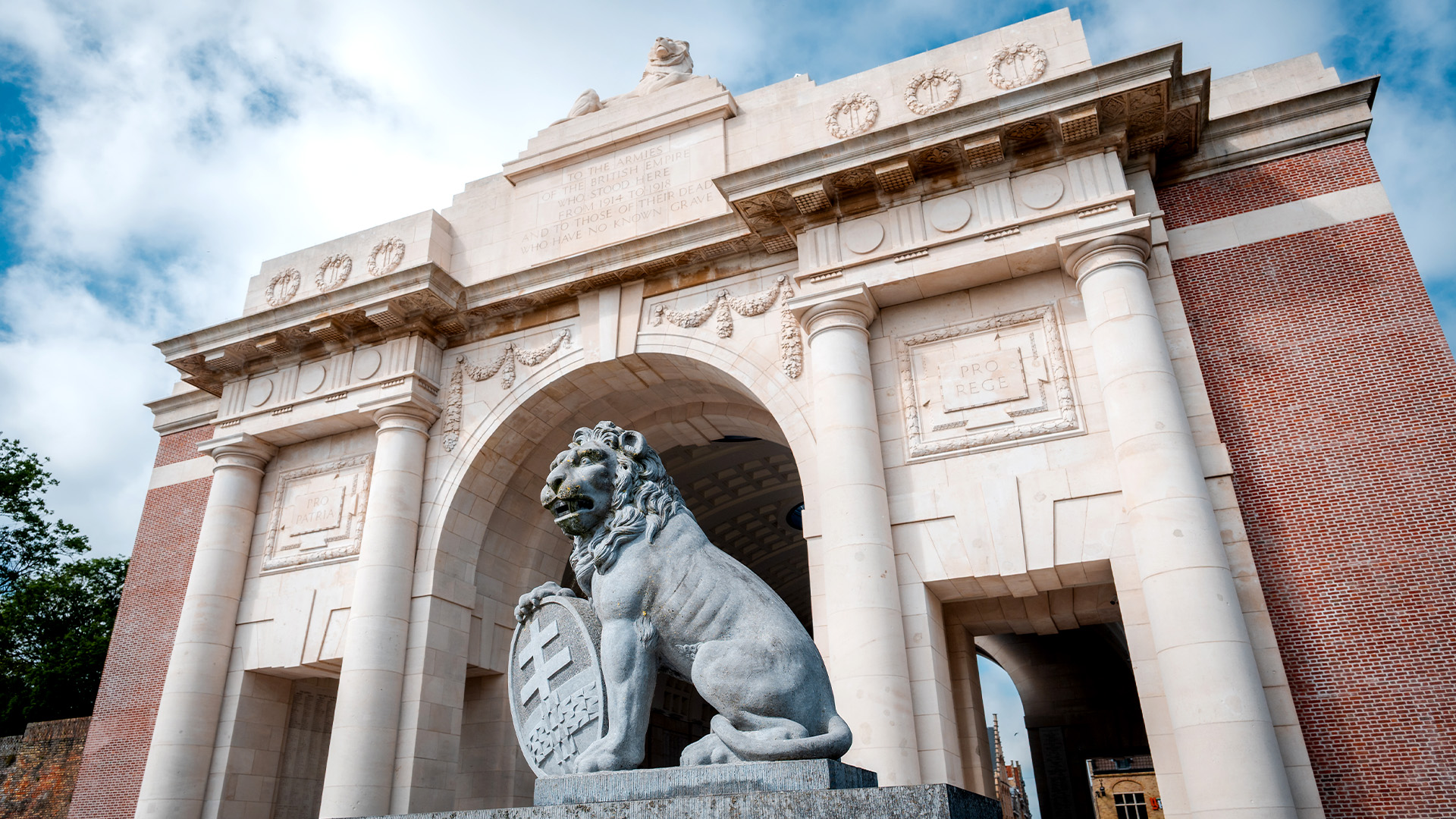
What’s next for the CWGC?
Our Non-Commemoration Programme remains central to our future work – identifying and honouring those who were previously overlooked. More than 11,600 names have been found to date, and at the start of this year we built a new memorial in central Cape Town, South Africa.
We’re also preparing to add names to the Freetown memorial in Sierra Leone for the Carrier Corps – non-combatant labourers who served the British Empire in the First World War. Designed by Lagos-based Oshinowo Studio, the new feature is a striking 4m glass prism etched with the names of 946 casualties and positioned above the original 1920s memorial. It’s a remarkable design, but also another complex project to deliver.


